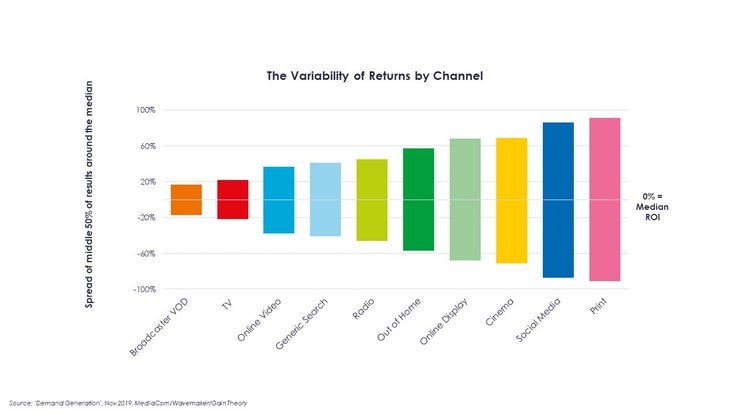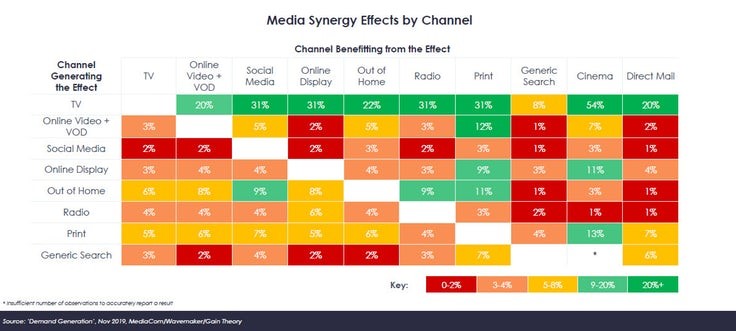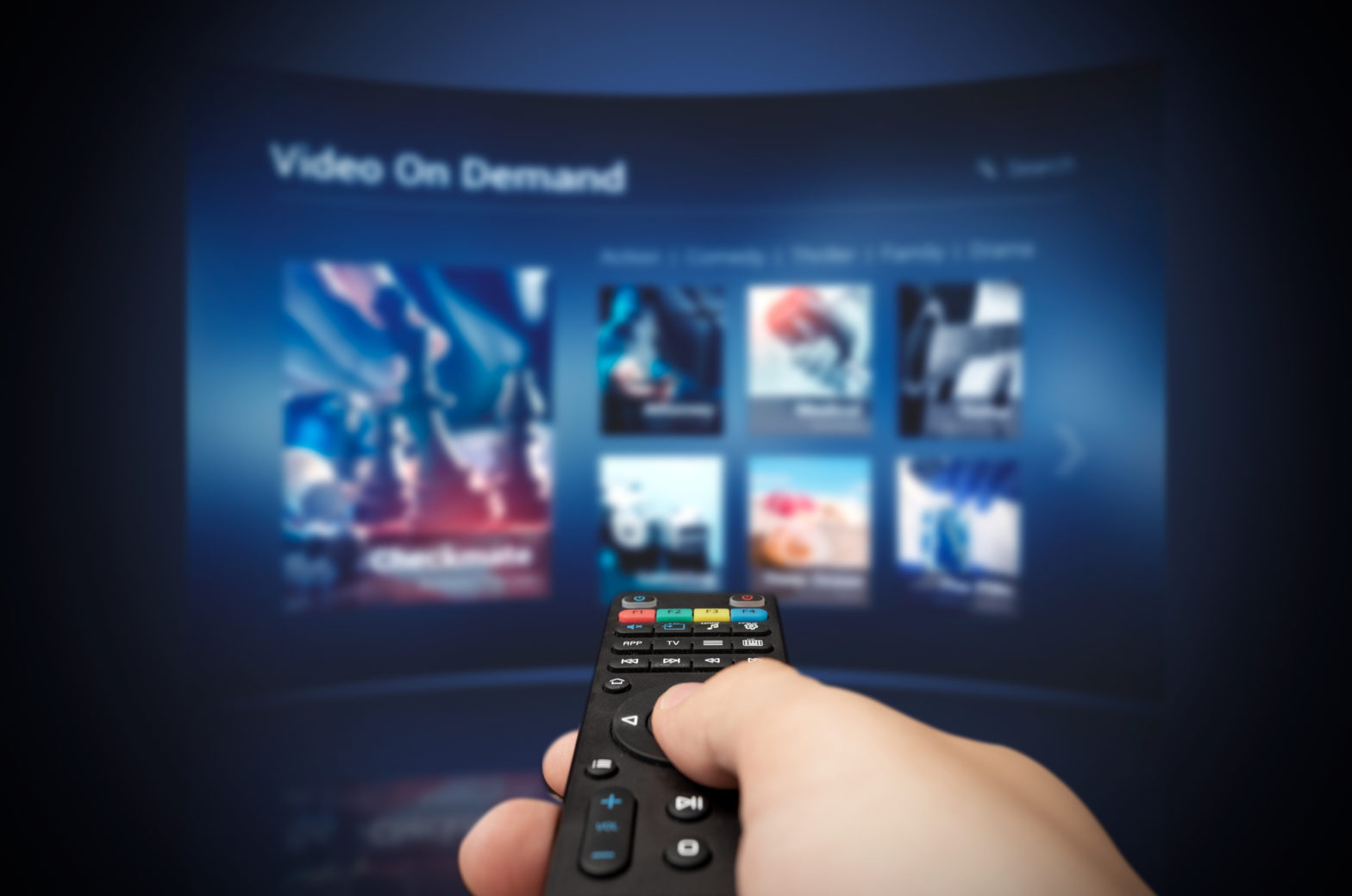TV is the “least risky” form of advertising, providing the most consistent return on investment when compared to other media channels, according to new research.
The study, conducted by Gain Theory, MediaCom and Wavemaker on behalf of Thinkbox, finds that linear TV advertising and broadcast video-on-demand (BVoD) deliver just 20% of variance compared with the median return (with BVoD performing slightly better than linear TV). This means that the middle 50% of results are within 20% (+/-) of the median ROI. For online video, the variance is closer to 40% and gets progressively worse through to print, where it is close to 90% (see chart below).

While the research has been commissioned by TV advertising body Thinkbox, it is based on econometric analysis of £1.4bn in media spend by 50 brands across 10 forms of¨advertising over three years. The aim is to offer brands practical advice if they don’t have access to econometric analysis across six categories – FMCG, finance, retail, online retail, automotive and travel.
The research also finds that TV has the highest ‘multiplier effect’ across other channels, boosting all other channels by at least 20% and the only media platform to do this. For example, TV advertising can boost performance in cinema by up to 54%; print, radio, online display and social media by 31%; and direct mail, online video, video-on-demand and outdoor by up to 22%.
The next highest is print, which can boost cinema advertising by up to 13% but only improves other media by up to 8%. The average multiplier effect across all channels is 8%.

In the short-term, it is search that delivers the highest percentage of media-driven sales at an average of 29% within the first two weeks of a campaign launch. TV comes in second on 23% and print third on 10%. However, looking longer term, TV performs the best. In the six-to-18 months following a campaign, TV delivers a further 2.4 times increase in sales than it generated in the first two weeks, while print delivers 1.2 times more and search 0.8 times more.
Offering brands practical help
To illustrate what this means for brands looking to find the optimal media mix, Thinkbox is launching a tool it calls ‘demand generator‘.
Marketers can input details of their brand across six variables – category, budget, brand size (in annual revenue), appeal (mass market or niche), percentage of sales that take place online and desire to minimise risk – and the tool then forecasts likely business results in terms of incremental revenue or profit per year, and revenue or profit return on investment.
These variables can have a significant impact on optimal channel choice. For the category variable, FMCG, in general, should invest a much higher proportion in TV (72%) than finance (37%).
Brands with a higher percentage of online sales should invest more in search, BVoD and online video, and less in TV than those with a lower percentage of online sales. Meanwhile, generally speaking the bigger the business the more it should invest in TV, while the more niche it is the more it should invest in digital media.
That means, for example, that if a brand has £50m in revenue, a budget of £2m, operates in online retail with niche appeal, gets more than 75% of its sales online and wants to minimise risk, the tool recommends 36% of budget is spent on search, 31% on TV and 10% on radio. This would lead to incremental revenues of £18m (+/- 21%) and revenue ROI of 9.1 (+/- 21%).
On the other hand, if a brand is mass-market automotive with £3.5bn in revenue, a budget of £20m and making less than 25% of its sales online, it recommends 76% of spend should go into TV, then 7% on radio and 4% on print. This would give incremental revenue of £558m (+/- 16%) and revenue ROI of 27.9 (+/- 16%).
Thinkbox research and planning director Matt Hill says he hopes the tool will offer marketers “something tangible and practical” to help brands find their optimal media mix.
“We hope the demand generator will be a helpful springboard for the many brands that don’t already do econometric analyses of their media performance. They can tailor it to their exact needs to find the best place to start from when deciding their media mix,” he says.
“With marketers increasingly adopting a zero-based budgeting approach, having a tool like this should provide a great evidence-based foundation on which to build their decisions.”
Source: marketingweek.com

